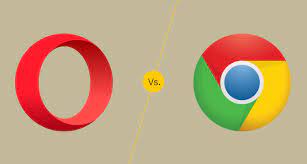Compare Chrome, Firefox And Edge; Which Browser Consumes The Most RAM?
Several Years Ago, The Corsair Gaming Company Shared An Interesting Ad With Its Audience That Quickly Caught Everyone’s Attention. In The Ad, A Man Dressed In A Google Chrome Browser Logo Was Swallowing A Large Amount Of RAM-Designed Cookies From A Plate; While Another Person In A Suit Bearing The Adobe Photoshop Logo Picked Up Only Small Pieces Of These Cookies And, After Using Only A Small Portion Of Them, Returned The Rest To The Plate.
Although this ad was a big accusation against Google and the Chrome browser, it provided the user with a pretty good picture of the browser’s RAM usage. As you may have noticed by now, the Chrome browser leaves a lot of your computer memory to itself, but the question always arises: Does Chrome really use your device’s RAM as much as it hates it?
The same is true for other popular Internet browsers.
In this article, two browsers, Mozilla Firefox and Microsoft Edge are used as Chrome’s main competitors to compare RAM usage, and the results are very interesting. Although Chrome has a reputation for boosting the memory of computer devices, the browser did not have the worst results in these tests.
Chrome was normal most of the time, and it was Firefox that used the most RAM of the three browsers. Microsoft’s Edge browser also provided the least amount of RAM possible in all the tests that were performed.

Comparison of Chrome, Firefox, and Edge: Test conditions
Good to know: Random-access memory or RAM is a type of short-term computer memory for temporary data storage. Your computer needs RAM to analyze text, data, images, music, video, or anything else you can find on a website. This is the reason why Internet browsers use a lot of device RAM; Especially when you open more tabs while using your browser.
RAM is one of the key components of a computer and a kind of memory for data storage; Such memories actually store software and operating system data so that the CPU can access this information quickly when needed.
To check how much RAM each browser needs, we closed all the unnecessary programs inside the computer and tested the mentioned browsers one by one. After opening each of these browsers, we opened the 10 tabs that are most used and popular among users: Google, Amazon, Netflix, Spotify, YouTube and… (also next to these sites, the main page of Corsair’s site was located; Because the company made us decide to do this experiment.)

To prevent plugins or bookmarks from being opened, we also decided to use “guest” accounts within each of these browsers.
From now on, all we had to do was run the Windows Task Manager and monitor the amount of memory used by each browser.
The next step was to see how the three browsers Chrome, Firefox, and Edge handle larger volumes of data. When multiple tabs are open at the same time, instead of dividing the amount of memory evenly, the browser automatically prioritizes between the tabs to make the tabs that matter most important to the user perform better.
In the next round, in addition to the 10 main tabs we had already opened, ten other tabs from the popular New York Times, Disney Plus, Google Stadia, eBay were closed. We opened Bye (Best Buy) and
In the next step, we opened 60 websites at the same time to test the capacity of each of these three browsers. These 60 sites were actually 3 different copies of each of the 20 tabs that we mentioned in the previous steps. In the final test, we ran each browser twice, and within each of the two browsers running the same, we opened another 20 tabs simultaneously. It’s like a user simultaneously using one browser window to type and another separate window to research a particular topic.

Comparison of Chrome, Firefox, and Edge: Results of RAM usage
Running 10 tabs simultaneously on Google Chrome and Mozilla Firefox required 952 and 995 MB of RAM, respectively. Among them, the most interesting results belonged to Microsoft’s Edge browser, which had only 873 MB of RAM; A number that is much more impressive than the other two browsers. What makes this even more interesting is that the Microsoft Edge browser actually uses the structure of the Chromium browser, which was developed by Google itself, just like the Chrome browser. Breaking Google down with the structure provided by the company itself is a very admirable thing that Microsoft has done well.
But in the test of 20 simultaneous fevers, Chrome with 1.8 GB of RAM had the worst result; Compared to Firefox and Edge, which used 1.6 and 1.4 GB of RAM, respectively.
Edge also performed best in 60 simultaneous fever tests (within a browser) with 2.9 GB of RAM; Unlike Firefox (3.9 GB) and Chrome (3.7 GB). Here, the difference between the three browsers increased dramatically compared to testing 20 simultaneous tabs; So much so that Firefox needed up to a gigabyte of RAM more than Edge to run flawlessly.
Of course, on the other hand, each user must consider their own usage and expectations of a browser; Because every regular user obviously does not need to open 60 tabs at the same time, and in the end, everything comes back to you.
In the final test (40 simultaneous tabs in two separate browser windows) Edge needed 2.5 GB, Chrome needed 2.8 GB and Firefox needed 3 GB of RAM. These numbers are twice what was obtained in a simultaneous 20-tab test of these three browsers; This was not so unexpected, except for the results recorded by the Chrome browser.
It seems that categorizing the tabs of this browser into two different windows makes us see better performance.

Comparison of Chrome, Firefox, and Edge: Results
In recent years, Microsoft has made great efforts to make Edge one of the best browsers of the day. Now, the results show that the company has done well in its responsibilities. Edge browser statistics were better than any of the other two browsers, Firefox and Chrome. If your device has a lot of RAM, there is not much difference in the use of these three browsers; But if your computer or laptop does not have a lot of RAM, using the Edge browser will be much cheaper and more practical.
Finally, it should be noted that the amount of RAM usage depends to a large extent on the various plugins and sites that you use and visit.
Do the results of this experiment make the Edge browser the “best” browser today?
Not necessarily. The lightness of the browser and its lack of high RAM may be a good benchmark for comparing it to other browsers, but the most suitable browser for you should also be able to run the plugins you want, along with preventing malware from infiltrating, along with dozens of other metrics. Be.
Keep in mind that none of these metrics were considered in this article other than the amount of RAM used in this article, so it is entirely up to you to decide whether to change the browser you are using after reading it.
Finally, if we are to get a general conclusion from this experiment, it is that Chrome is not as weak as we thought it would be in controlling the amount of computer RAM and that Microsoft Edge beats both Chrome and Firefox in this comparison.
We would be happy if you could share your experience with any of these three browsers in the comments section. What do you think is the best and most practical option?.

